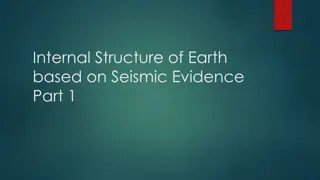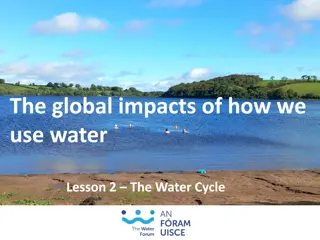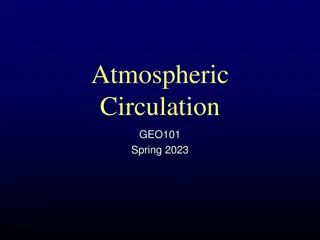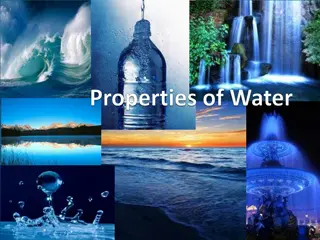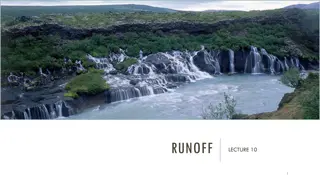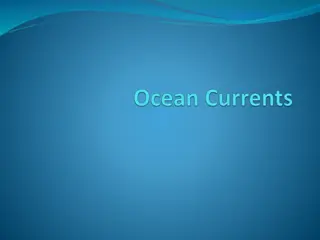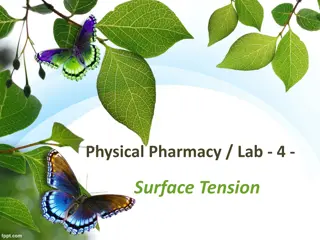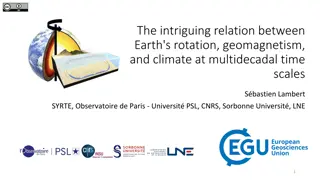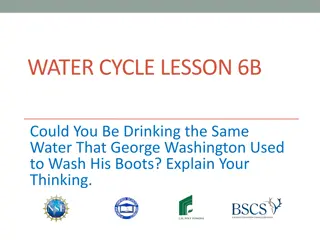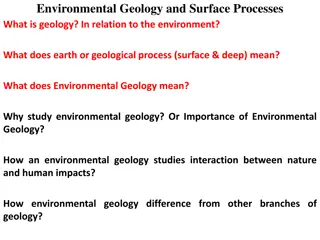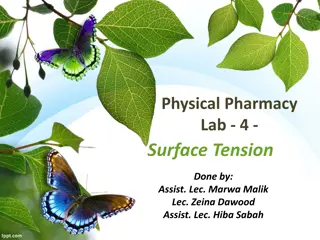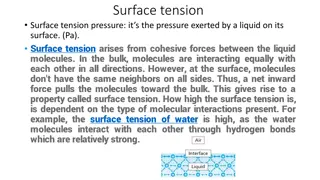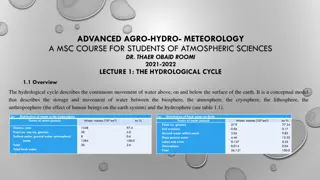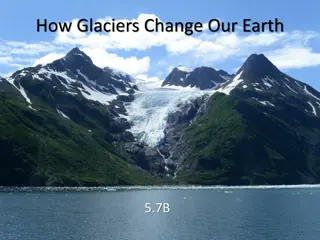The Water Cycle and Its Impact on Earth's Surface
Water continuously moves between Earth's surface and the atmosphere in the water cycle, driven by solar energy. Precipitation falling on land forms streams and rivers that shape the landscape through erosion and deposition. Moving water carries away rock and soil, creating new landforms. Rivers carve out valleys, ocean waves reshape coastlines, and erosion constantly alters the Earth's surface. The amount and type of erosion are influenced by various factors such as water movement, speed, and vegetation coverage.
Download Presentation

Please find below an Image/Link to download the presentation.
The content on the website is provided AS IS for your information and personal use only. It may not be sold, licensed, or shared on other websites without obtaining consent from the author.If you encounter any issues during the download, it is possible that the publisher has removed the file from their server.
You are allowed to download the files provided on this website for personal or commercial use, subject to the condition that they are used lawfully. All files are the property of their respective owners.
The content on the website is provided AS IS for your information and personal use only. It may not be sold, licensed, or shared on other websites without obtaining consent from the author.
E N D
Presentation Transcript
Water is continuously moving between Earth s surface and the atmosphere in a process called the water cycle. Water evaporates from the surface of the earth, rises into the air and cools, condenses, collects in clouds, and falls again to the surface as precipitation. The energy that causes the water cycle comes from the sun.
Most precipitation that falls to Earth goes directly into oceans. Some precipitation falls on land and accumulates in lakes and ponds or moves across the land. Rain or snowmelt in high elevations flows downhill in many streams which collect in lower elevations to form a river that flows downhill to an ocean.
Water moving across the earth in streams and rivers pushes along soil and breaks down pieces of rock in a process called weathering & erosion. The moving water carries away rock and soil from some areas and deposits them in other areas, creating new landforms or changing the course of a stream or river.
The amount of erosion in an area, and the type of earth material that is moved, are affected by the amount of moving water, the speed of the moving water, and by how much vegetation covers the area.
Rivers carve out valleys as they move between mountains or hills. The speed of the river s flow depends on the slope of the land. The speed of the river s flow affects the shape of the river s course (straight or meandering), the shape of the valleys it carves (u-shaped or v-shaped) and the amount of earth material that is pushed along or left behind in floodplains and deltas.
Water moving in ocean waves carries sand, shells and debris away from some coastal areas and deposits them in new areas, changing the shape of the coastline.
Erosion is constantly reshaping the earth s land surface. Sometimes the effects of erosion are immediate (for example, a flash flood or a hurricane) and sometimes the effects of erosion take a long time (for example, the changing course of a river or the carving of the Grand Canyon).



